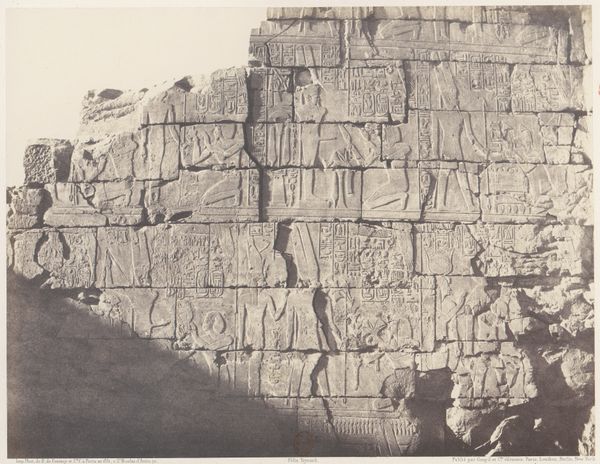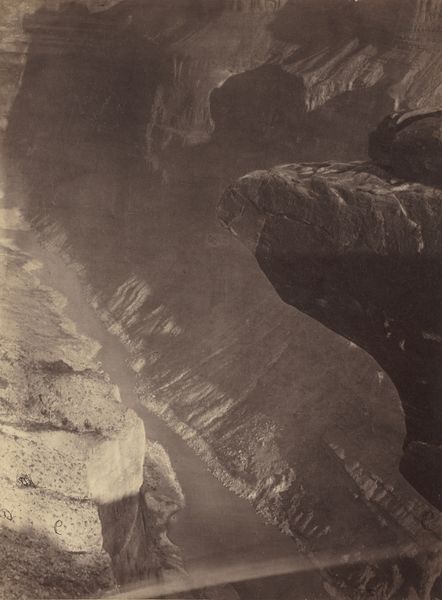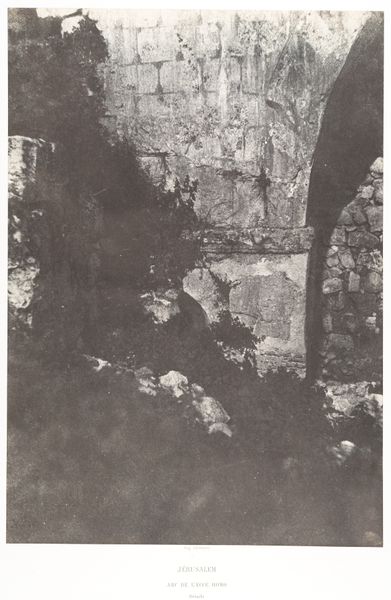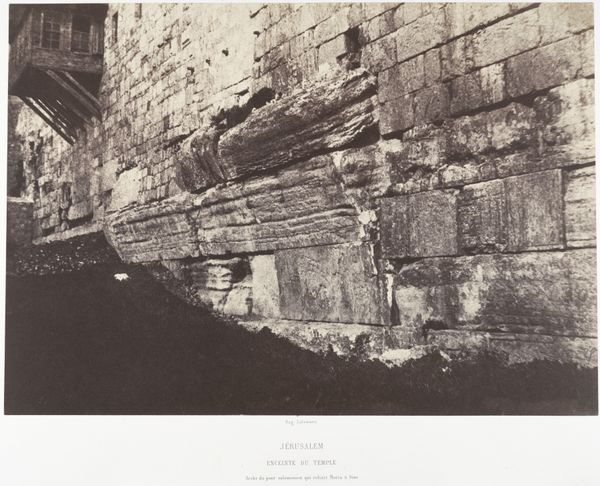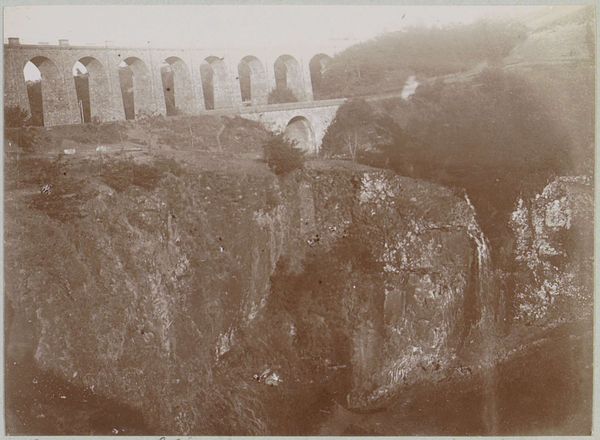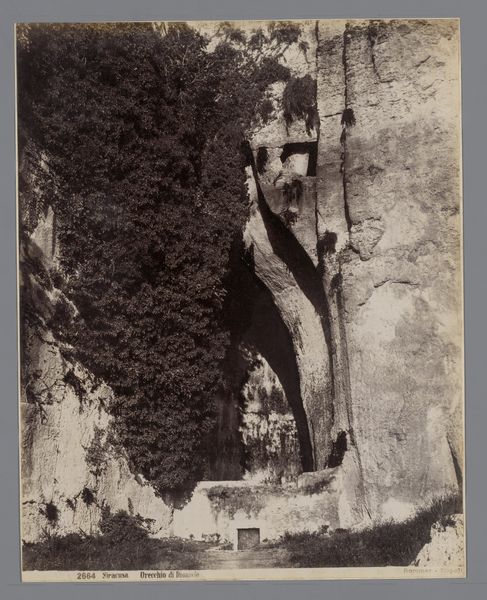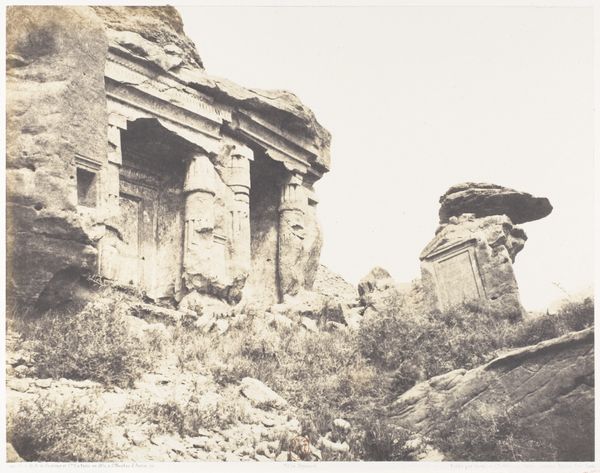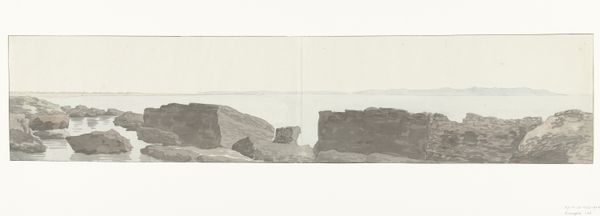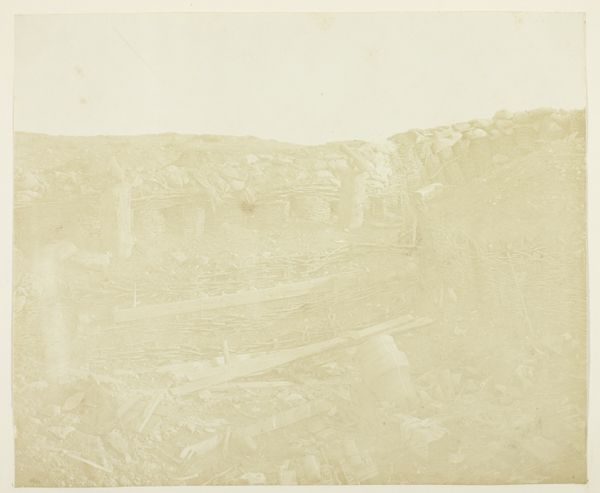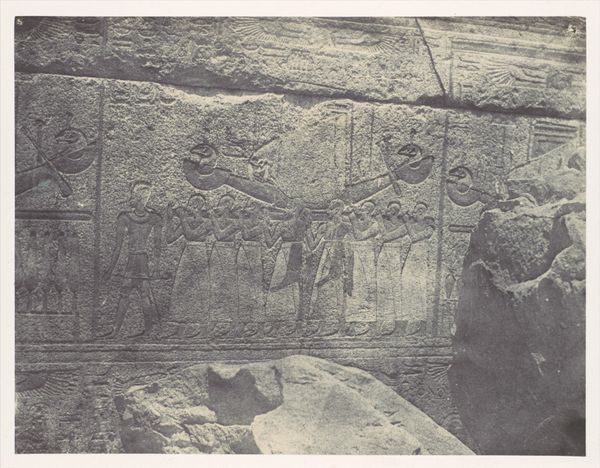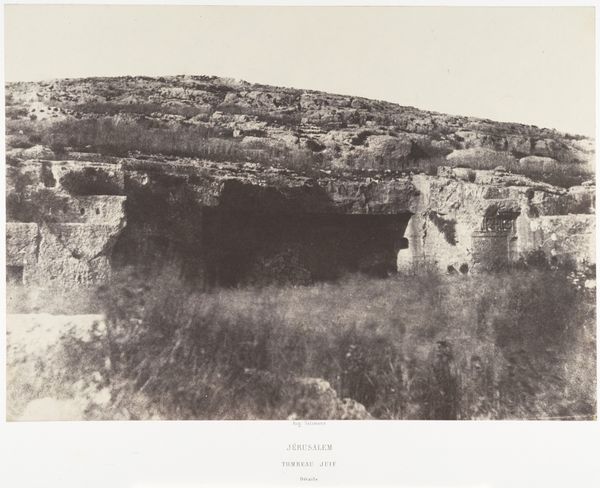
print, photography, gelatin-silver-print, architecture
#
photo of handprinted image
# print
#
landscape
#
ancient-egyptian-art
#
photography
#
gelatin-silver-print
#
architecture
Dimensions: Image: 9 3/16 × 11 7/8 in. (23.4 × 30.2 cm) Mount: 18 1/2 × 24 1/8 in. (47 × 61.2 cm)
Copyright: Public Domain
Curator: The photograph before us is entitled "Dakkeh," taken by John Beasley Greene between 1853 and 1854. It's a gelatin-silver print, currently residing here at the Metropolitan Museum of Art. Editor: The imposing scale and raw texture immediately strike me. The close cropping enhances this feel. It feels…ancient and weighty. Curator: The image captures a portion of an ancient Egyptian temple wall at Dakkeh. Notice the hieroglyphs carved into the stone, detailing gods, rituals, and perhaps even historical accounts. Greene wasn't simply documenting a building, he was recording a symbolic landscape. Editor: It’s amazing how the image highlights both permanence and the effects of time. Think of the labor involved in quarrying that stone, carving those symbols! We are looking at physical and cultural endurance. The process to then develop this photo... Curator: Absolutely. Each symbol tells a story; each figure embodies beliefs about life, death, and the cosmos. That central figure with upraised arms...it could be indicative of prayer, power, or protection. The light illuminating only the carved image gives the photo its narrative heft. Editor: Considering Greene's presence there, in Egypt, the social context of producing this image is significant too. Think about the colonial gaze, the Western fascination with ancient Egypt. Was this documentation or appropriation? The relationship between the photographer, subject, and viewer are inseparable from the image itself. Curator: A pertinent question indeed. I believe Greene's detailed photography contributes to historical understanding but understanding with all its layered complexities. To see Dakkeh endure through Greene’s lens allows us to appreciate the staying power of a culture embedded within stone and memory. Editor: And to consider the physical image, this gelatin-silver print, existing as a artifact as significant as the carvings that serve as the photographic subject...makes you consider the labor that we often exclude from understanding our cultural artifacts. Curator: It gives you pause, doesn’t it? Thank you for these insights! Editor: Thank you. It has me appreciating the multiple dimensions of time represented here.
Comments
No comments
Be the first to comment and join the conversation on the ultimate creative platform.
